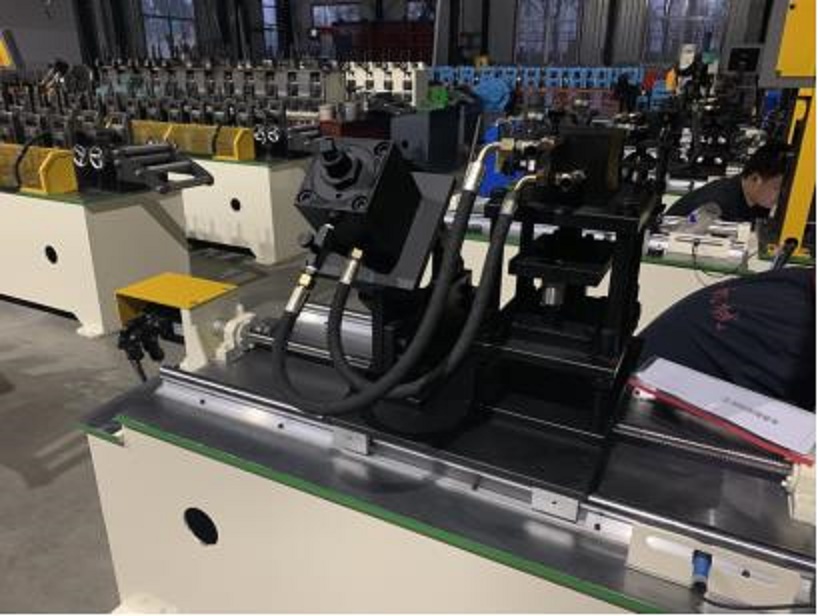
The Advancements and Applications of Rolling Forming Machines
Rolling forming machines have become a vital component in the manufacturing industry, enabling the production of a variety of metal components with precision and efficiency. Utilizing a process that involves rolling metal sheets or coils through a series of shaping dies, these machines transform flat stock into complex profiles that meet specific dimensional requirements. The evolution of rolling forming technology has significantly impacted sectors such as automotive, construction, and aerospace, driving innovation and enhancing productivity.
At the core of the rolling forming process is the ability to create elongated shapes such as channels, beams, and rails from an initial flat piece of metal. The machine operates by feeding the metal through a set of rollers aligned in a specific configuration. As the metal passes through, it is systematically deformed into the desired shape without the need for cutting or welding, allowing for continuous production of long lengths of material. This not only reduces waste but also minimizes the time and labor involved in production.
One of the primary advantages of using rolling forming machines is their precision. The use of computer numerical control (CNC) technology has revolutionized this field, allowing for intricate designs and exact tolerances to be achieved. Manufacturers can create profiles that meet exact specifications, reducing the need for post-processing and ensuring a higher quality end product. Modern rolling forming machines are equipped with advanced sensors and feedback systems that monitor the process in real-time, further enhancing precision and reducing the chances of defects.
The materials commonly processed by rolling forming machines include various grades of steel, aluminum, and even specialty alloys. This versatility makes them a staple in industries that require lightweight yet strong materials, such as automotive and aerospace. For example, in the automotive sector, rolling forming machines are used to produce components for vehicle frames, brackets, and chassis parts, all of which contribute to vehicle strength and safety. Similarly, in the construction industry, they are employed to manufacture steel studs, roof trusses, and various structural elements that form the backbone of modern buildings.

Another significant benefit of rolling forming machines is their efficiency. The continuous operation of these machines allows for high-volume production, which is essential in meeting the demands of today’s fast-paced market. With the ability to produce long lengths of material in one pass, manufacturers can significantly reduce production time and labor costs. Moreover, the automation of the rolling forming process has streamlined operations, allowing for less manual intervention and, consequently, fewer errors.
In recent years, there has been a growing trend towards sustainability in manufacturing. Rolling forming machines contribute to this movement by reducing material waste and enabling the use of recycled metals. By utilizing scrap metal and reprocessing it into usable forms, manufacturers can lower their environmental impact while also reducing production costs. This aligns with the increasing demand for sustainable practices across industries, making rolling forming machines a crucial asset for companies seeking to enhance their green credentials.
As technology continues to advance, the future of rolling forming machines looks promising. Innovations in materials science and automation are expected to further enhance the capabilities of these machines, allowing for even more complex shapes and higher production speeds. The integration of artificial intelligence and machine learning will pave the way for smarter production processes, where machines can predict maintenance needs and optimize operations based on real-time data.
In conclusion, rolling forming machines play a pivotal role in modern manufacturing, offering a combination of precision, efficiency, and sustainability. Their ability to transform flat metal into complex shapes with minimal waste makes them indispensable in sectors such as automotive, construction, and aerospace. As technology continues to evolve, the potential applications for rolling forming machines will only expand, making them an essential tool in the quest for innovation in manufacturing. With ongoing advancements, these machines will not only streamline production processes but also contribute to a more sustainable future for the industry.